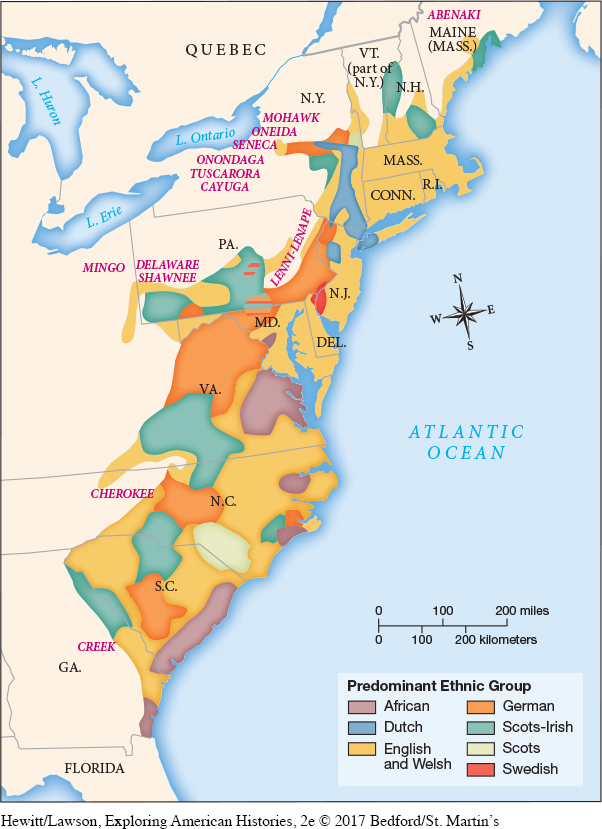Rural Americans Face Changing Conditions
While seaport cities and larger towns fostered a growing cohort of individuals who lived outside traditional households, families remained the central unit of economic organization in rural areas, where the vast majority of Americans lived. Yet even farms were affected by the transatlantic circulation of goods and people.
In areas along the Atlantic coast, rural families were drawn into commercial networks in a variety of ways. Towns and cities needed large supplies of vegetables, meat, butter, barley, wheat, and yarn. Farm families sold these goods to residents and bought sugar, tea, and other imported items that diversified their diet. Few rural families purchased ornamental or luxury items, but cloth or cheese bought in town saved hours of labor at home. Just as important, coastal communities like Salem, Massachusetts, and Wilmington, Delaware, that were once largely rural became thriving commercial centers in the late seventeenth century.
In New England, the land available for farming shrank as the population soared. In the original Puritan colonies, the population rose from 100,000 in 1700 to 400,000 in 1750, and many parents were unable to provide their children with sufficient land for profitable farms. The result was increased migration to the frontier, where families were more dependent on their own labor and a small circle of neighbors. And even this option was not accessible to all. Before 1700, servants who survived their indenture had a good chance of securing land, but by the mid-eighteenth century only two of every ten were likely to become landowners.
In the Middle Atlantic region, the population surged from 50,000 in 1700 to 250,000 in 1750. The increase was due in part to the rapid rise in wheat prices, which leaped by more than 50 percent in Europe. Hoping to take advantage of this boon, Anglo-Americans, Germans, Scots-Irish, and other non-English groups flooded into western Pennsylvania, New York’s Mohawk River valley, and the Shenandoah Valley of Virginia in the early eighteenth century. By the 1740s, German families had created self-contained communities in these areas. They worshipped in German churches, read German newspapers, and preserved German traditions. Meanwhile Scots-Irish immigrants established churches and communities in New Jersey, central Pennsylvania, and western Maryland and Virginia (Map 3.3).

In the South, immigrants could acquire land more easily, but their chances for economic autonomy were increasingly influenced by the spread of slavery. As hundreds and then thousands of Africans were imported into the Carolinas in the 1720s and 1730s, economic and political power became more entrenched in the hands of planters and merchants. Increasingly, they controlled the markets, wrote the laws, and set the terms by which white as well as black families lived. Farms along inland waterways and on the frontier were crucial in providing food and other items for urban residents and for planters with large labor forces. But farm families depended on commercial and planter elites to market their goods and help defend their communities against hostile Indians or Spaniards.
Exploring American HistoriesPrinted Page 93
Exploring American Histories Value EditionPrinted Page 71
Chapter Timeline